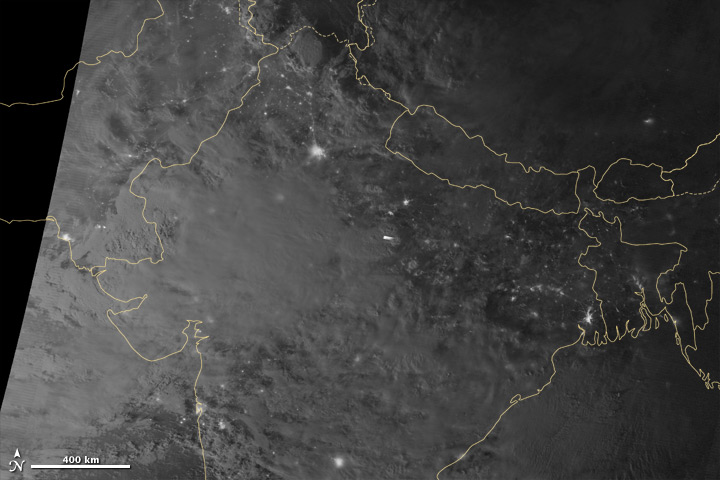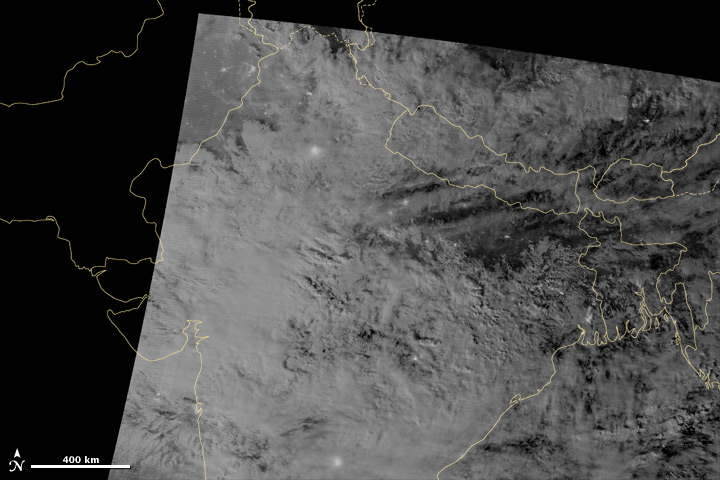Earlier this week, as India endured the worst blackout in its history, many readers and members of the media asked us to show the vast country without lights. Just a few weeks ago, Earth Observatory showed the world what the Mid-Atlantic United States looked like before and after a massive storm-induced blackout. (We also showed the city lights of London.)
But this week, there was nothing to see…at least from space. Here is India before the blackout, as viewed through the day-night band of the VIIRS instrument on the Suomi-NPP satellite:
One night later, the view was not much better…
What’s the problem? It’s monsoon season in India, which means near-constant clouds and rain…and very little visibility for satellite instruments observing visible wavelengths of light.
Surely there is a blackout under those clouds, as nearly half of the nation (and 600 million people) went without power for parts of two days. You can catch a faint hint of more or less light between July 30 and 31 in the northeastern portion of the images. But mostly, the view is clouds, clouds, and more clouds. They are lit by moonlight, at least.






In first image you can spot few of the cities from the light intensity like Delhi, Lucknow, Kolkata, Mumbai, Pune, and Hydrabad.
In second image only Delhi, Lucknow, Kolkata, and Hydrabad are visible.
Very useful pictures, also tells ground based optical astronomers about probability of clear skies during nights. Of course, this is in addition to what we know from imaging in Infrared. Further, there are no images taken during the black black out period to see the ‘change’.
Another point I wish to make is about the political boundaries. We all feel happy to learn that ‘science’ and ‘space imaging’ does not recognise human divisions like political boundaries. It would have been better yo show images as they are ‘observed’ without adding such boundaries, particularly since these are not recognised ones. In this case the boundaries shown under the Indian state of J&K. It should have added an explanatory note at least.